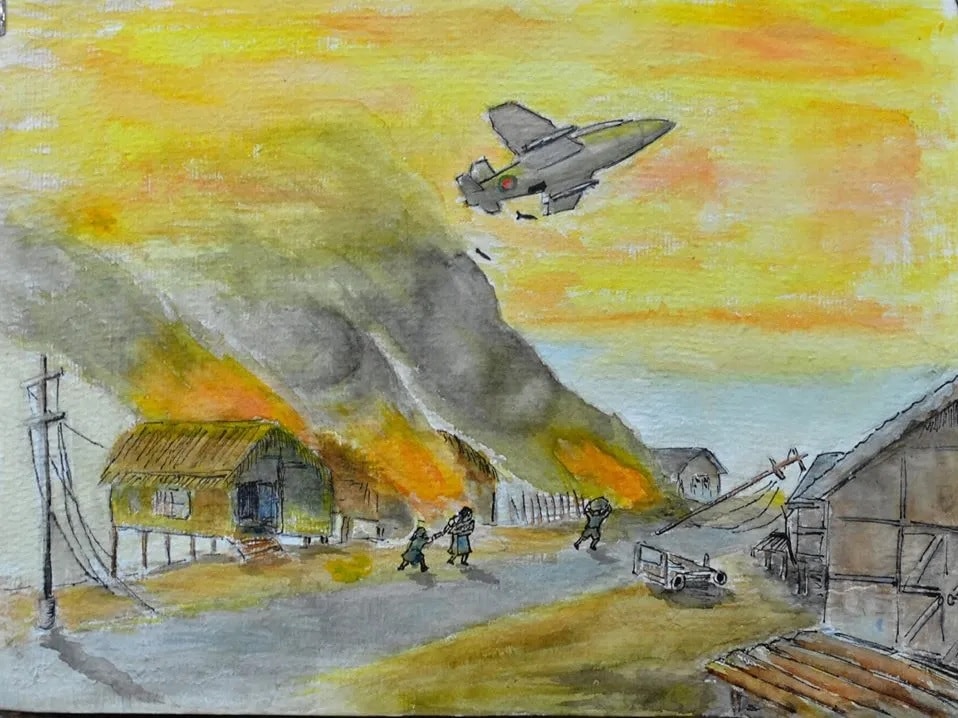What’s in today’s article?
- Why in News?
- Mizoram of 1966
- What was the Government’s Response?
- How was the IAF Involved?
- What Followed after the Quelling of Operation Jericho?
Why in News?
- The use of air power in Mizoram in 1966 has become a hot topic of discussion after the PM of India mentioned it in the Lok Sabha while replying to the no confidence motion.
Mizoram of 1966:
- A period of protests and armed insurgency followed in the 1960s.
- A separatist movement (seeking independence from India) led by Mizo National Front (MNF) was gathering steam in the area now known as Mizoram, and then referred to as the Mizo Hills.
- The Centre had decided to station another Assam Rifles battalion in the Hills, in addition to the one Assam Rifles battalion and a few BSF companies already present.
- Outraged by this, the MNF leadership decided to launch ‘Operation Jericho’ to take control of Aizawl and overran Aizawl in a few days’ time (in late February).
- Operation Jericho had been described by a military writer as an expression of confidence and clinical planning not witnessed hitherto fore in the Indian subcontinent.
- A large number of volunteers who joined in the armed struggle were either ex-servicemen or personnel of the Assam Regiment battalions dismissed for lack of discipline.
- The Mizo rebels had besieged the HQs of 1 Assam Rifles and released all prisoners from the local jail.
- There was widespread looting of arms and cash from the government treasury.
- Proclamations of “independence” were made and a demand raised for the Assam Rifles to surrender.
What was the Government’s Response?
- The Army operations on the ground to clear rebel-held positions was led by Brig (later Maj Gen) Rustom Zal Kabraji, who was commanding the 61 Mountain Brigade, located at Agartala.
- Attempts were made to re-supply the Assam Rifles battalion with helicopters, but these were shot at by the Mizo rebels.
- The operations on the ground faced stiff resistance from the rebels, taking several days to reach Aizawl.
How was the IAF Involved?
- As the Army struggled to dislodge the rebels, the Indian Air Force (IAF) was called in.
- The IAF’s initial role was to re-supply the army installations, for which Dakotas and Caribou transport aircraft were pressed in from Guwahati and Jorhat.
- In one such mission, the Dakota received 21 bullet holes before it landed at Kumbhigram air base near Silchar.
- This was the event that necessitated the offensive air operations.
- The two IAF Squadrons, 29 Squadron and 14 Squadron, were primarily involved in the air ops.
- The 29 Squadron flew the Toofani (French origin Dassault Ouragan) based at Bagdogra, while the 14 Squadron flew Hunters out of Jorhat.
- The actual missions started on March 5. The air attack helped the Army regain control of vast areas that had been declared independent.
- By the end of the month, Brig Kabraji’s Brigade had regained control of Mizoram.
What Followed after the Quelling of Operation Jericho?
- Like several other northeastern states of India, Mizoram was previously part of Assam.
- In 1971, the government agreed to convert the Mizo Hills into a Union Territory (UT), which became UT of Mizoram in 1972.
- Following the Mizoram Peace Accord (1986) between the Government and the MNF, the Indian Parliament adopted the 53rd amendment of the Indian Constitution in 1986.
- This allowed for the creation of the State of Mizoram on 20 February 1987, as India’s 23rd state.
Q1) How can a new state be formed in India?
Parliament may by law admit into the Union, or establish, new states on such terms and conditions as it thinks fit. Article 3 of the Constitution of India authorises the Indian Parliament to form new states; alter the area, boundaries or names of existing states by legislation.
Q2) What is the strategic significance of the Indian state of Mizoram?
Sandwiched between Myanmar in the east and south and Bangladesh in the west, Mizoram occupies an area of great strategic importance in the north-eastern corner of India.
Source: Air Force’s ops in Mizoram: How Operation Jericho was quelled
Last updated on June, 2025
→ UPSC Notification 2025 was released on 22nd January 2025.
→ UPSC Prelims Result 2025 is out now for the CSE held on 25 May 2025.
→ UPSC Prelims Question Paper 2025 and Unofficial Prelims Answer Key 2025 are available now.
→ UPSC Calendar 2026 is released on 15th May, 2025.
→ The UPSC Vacancy 2025 were released 1129, out of which 979 were for UPSC CSE and remaining 150 are for UPSC IFoS.
→ UPSC Mains 2025 will be conducted on 22nd August 2025.
→ UPSC Prelims 2026 will be conducted on 24th May, 2026 & UPSC Mains 2026 will be conducted on 21st August 2026.
→ The UPSC Selection Process is of 3 stages-Prelims, Mains and Interview.
→ UPSC Result 2024 is released with latest UPSC Marksheet 2024. Check Now!
→ UPSC Toppers List 2024 is released now. Shakti Dubey is UPSC AIR 1 2024 Topper.
→ Also check Best IAS Coaching in Delhi






















